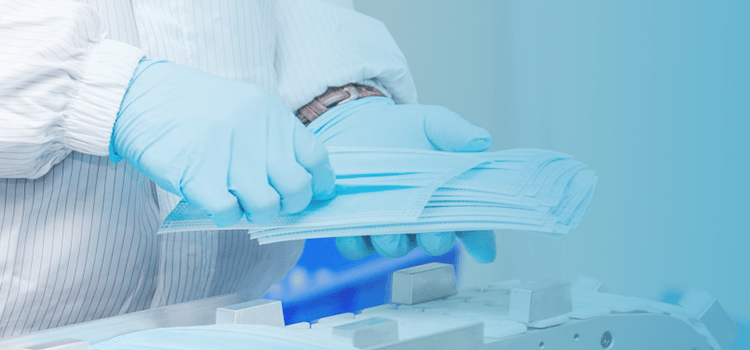


Views: 0 Author: Site Editor Publish Time: 2023-09-15 Origin: Site









Elevating Patient Care with Disposable Transfer Pads
In the world of healthcare, patient comfort, safety, and hygiene are paramount. Disposable transfer pads, also known as one-time-use patient transfer pads, have emerged as a critical tool, meeting stringent international standards while redefining the patient transfer experience. This comprehensive article delves into the intricate aspects of disposable transfer pads, including their adherence to standards, material composition, fluid-resistant capabilities, weight distribution attributes, and their versatile applications in various healthcare scenarios.
1. International Standards:
Disposable transfer pads are engineered to meet a range of international standards, emphasizing their role in enhancing patient care. Some key standards include ISO 10993-10 (Biological evaluation of medical devices - Part 10: Tests for irritation and skin sensitization), ISO 16603 (Resistance of materials used in protective clothing to penetration by blood and body fluids), and ISO 10993-5 (Biological evaluation of medical devices - Part 5: Tests for in vitro cytotoxicity). Compliance with these standards ensures that transfer pads are not only comfortable but also safe for patients' sensitive skin and provide effective fluid resistance.
2. Material Composition and Fluid Resistance:
Disposable transfer pads are meticulously crafted from high-quality nonwoven materials known for their softness, durability, and fluid-resistant properties. These nonwoven fabrics are typically composed of synthetic fibers such as polypropylene and polyethylene. The construction of these materials offers exceptional fluid resistance, effectively preventing the penetration of bodily fluids and maintaining a clean and hygienic patient transfer process. The pads' ability to repel liquids ensures that both patients and healthcare providers are protected from potential contamination.
The weight of disposable transfer pads is often measured in grams per square meter (gsm), and it can vary depending on the specific product. Typically, these pads have a moderate weight, striking a balance between comfort and effectiveness.
3. Application Scenarios:
Disposable transfer pads find utility in a wide array of healthcare scenarios due to their versatility and efficiency. Here's an analysis of different types of disposable transfer pads and the scenarios they are best suited for:
Hospital and Clinical Settings: These transfer pads are indispensable in hospitals, clinics, and long-term care facilities, streamlining patient transfers between beds, stretchers, and examination tables. Their fluid-resistant nature ensures that potentially infectious fluids do not spread during transfers, safeguarding both patients and healthcare providers.
Home Care: In home care settings, disposable transfer pads empower family members and caregivers to facilitate safe transfers for patients with mobility challenges. These pads offer convenience and peace of mind, making patient transfers more dignified and secure.
Maternity Care: Disposable transfer pads play a crucial role in maternity care, providing a clean and hygienic surface for mothers during labor and postpartum care. They ensure the comfort and well-being of both mothers and newborns.
Bariatric Care: Some disposable transfer pads are designed to accommodate patients with higher weight requirements. These bariatric transfer pads provide an inclusive solution for a diverse range of healthcare needs.
Emergency Medical Services (EMS): Disposable transfer pads are also invaluable in emergency medical services, where quick and safe patient transfers are essential. Their compact and portable nature makes them ideal for use in ambulances and during emergency medical procedures.
4. Use Cases:
Disposable transfer pads are versatile and serve a range of essential purposes in healthcare settings:
Patient Transfers: The primary purpose of disposable transfer pads is to facilitate safe and comfortable patient transfers. They are used when moving patients between beds, stretchers, wheelchairs, or other medical equipment. These pads reduce friction and shear forces, preventing skin damage and discomfort during transfers.
Infection Control: Disposable transfer pads play a critical role in infection control. They provide a barrier that helps contain and manage bodily fluids, reducing the risk of cross-contamination between patients and healthcare providers. This is especially crucial in environments where infection control is a top priority.
Pressure Injury Prevention: Transfer pads contribute to pressure injury prevention by minimizing the stress on the patient's skin and tissues during transfers. They distribute weight evenly, reducing the risk of pressure ulcers, particularly in patients with limited mobility.
Maternity Care: In maternity wards, disposable transfer pads are used during labor, delivery, and postpartum care. They offer a clean and comfortable surface for mothers during childbirth and provide protection against amniotic fluid and postpartum bleeding.
Comfort and Dignity: Beyond their clinical applications, disposable transfer pads enhance patient comfort and dignity. They provide a soft and dry surface, contributing to a more pleasant and respectful healthcare experience for patients.
Emergency Situations: In emergency medical services, disposable transfer pads are crucial for efficiently and safely transferring patients during critical situations. They ensure that patients receive prompt and secure care, even in challenging conditions.
Home Care: Disposable transfer pads are a valuable tool for caregivers in home care settings. They make it easier to assist patients with mobility challenges, providing a convenient and hygienic solution for transfers within the home environment.
Bariatric Care: Specialized bariatric transfer pads are designed to support the unique needs of larger patients. They enable safe and comfortable transfers for bariatric individuals, reducing the risk of injury for both patients and caregivers.
Conclusion: Elevating Patient Care with Disposable Transfer Pads
Disposable transfer pads represent a paradigm shift in patient care, where safety, comfort, and efficiency converge. Their adherence to international standards, fluid-resistant material composition, and thoughtful design for weight distribution elevate the patient transfer process to a new level of excellence. From hospitals and clinics to home care and maternity settings, disposable transfer pads stand as an indispensable tool for healthcare professionals, caregivers, and patients. They epitomize the commitment to optimal patient care, dignity, and well-being in an ever-evolving healthcare landscape.
Certainly! Here's An Introduction To The PB70 AAMI Level 3 Standard:
Unveiling The Performance Metrics of SAP Polymer Materials in Underpads
Unlocking the Potential of SAP High Polymer Materials in the Medical Consumables Industry
Sustainable Materials (PLA/RPET) Integration in the Disposable Medical Consumables Industry
OEM 3-5 Star Luxury Eco-Friendly Biodegradable Traveling Guest Bathroom Hotel Toiletries Kit